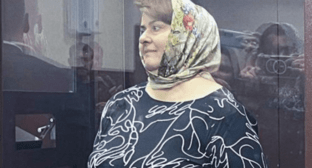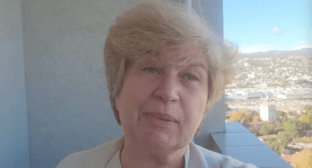24 April 2003, 02:48
Cherkessk
Capital of Karachay-Cherkessia. Located in Ciscaucasia, on the right bank of the Kuban River. The climate is continental. The temperature in January averages to -5?С, in July 21?С. Precipitation of 550 mm a year.
Cherkessk is a railway station on the Nevinnomyssk - Dzheguta branch of the Armavir - Baku line, the initial point of the Sokhumi Military Highway (built in 1828-78). Population (1992 est.) 118.7 thousand, (1897 est.) 8.1 thousand, (1926 est.) 19 thousand, (1939 est.) 28.6 thousand, (1959 est.) 42 thousand, (1970 est.) 67 thousand, (1979 est.) 91 thousand.
Founded in 1804 as a Russian fortification in the Kuban boundary line on the site where in 1790, Russian troops under General I.I. German defeated the Turkish army of Batal-Pasha, sent with an arsenal and money to make mountaineers rebel against Russia. In honour of the victory over Batal-Pasha, the stanitsa (Cossack village) was given the name of Batalpashinskaya; it was enclosed with an earth bank and a ditch. In 1846, the stanitsa opened an exchange yard, the main subject of exchange with cattle-breeding mountaineers being salt, then a trade fair. Since 1880, the stanitsa of Batalpashinskaya was the administrative centre of the uyezd (canton) (referred to as the section since 1886) of Kuban oblast (province). Batalpashinskaya sold grain and cattle and had a saw-mill. Since 1922, it was the centre of Karachay-Cherkess Autonomous Oblast (Province). Since 1931, it was referred to as the town of Batalpashinsk. In 1934, it was given the name of Sulimov; in 1937, of Yezhovo-Cherkessk; in 1939, of Cherkessk. During the Great Patriotic War of 1941-45, it was occupied from August 11, 1942 to January 17, 1943.
Present Cherkessk has a chemical industrial association; factories of refrigerating machine-building, general mechanical rubber goods, low-voltage instrumentation, cement. Technological institute. Research Institute of Economy, History, Language and Literature. Drama Theatre. Karachay-Cherkess Historical, Сultural and Natural Reserve Museum (until 1988 referred to as the Museum of Local Lore, founded in 1918).
The general city planning scheme was developed in 1956. Cherkessk was divided into three microdistricts: central, southern, northern. The central one, including the oldest part with curved streets of the former Cossack stanitsa, is the industrial and transport, administrative and cultural city centre; it is here that the largest public buildings are concentrated: the Soviet House (1948, the architect K.Y. Khubiyev), the Executive Committee of the Town Soviet of People's Deputies, the Oblast Library, the Drama Theatre (1982, the architect A.A. Kherkhiulidze), the General Post-Office, the Kuban Hotel; the microdistrict also includes the Zeleny Ostrov Park in the flood-lands of the Kuban River. The northern microdistrict, developing since 1957, is mainly industrial, while the southern one is mostly built up with individual farmsteads. The town has monuments to V.I. Lenin (the sculptor Z.M. Vilensky); Y.F. Balakhonov, a Civil War Hero; Soviet Army soldiers at the Common Grave.
Batalpashinsk Lakes, turned into a reservoir, the so-called Cherkessk Sea, are 18 km of the town. They are a place of mass rest and water sports. To the south of Cherkessk, near the town of Ust-Dzheguta, there are burial mounds of the bronze epoch (the 3-2nd thousand years BC), where bronze adornments, ceramics with carved ornamental patterns were found. Near the settlement of Krasnogorsky, there are ruins of a Russian fortification, a circular stone tower with slit-like embrasures, erected during the Caucasian War of 1832.




